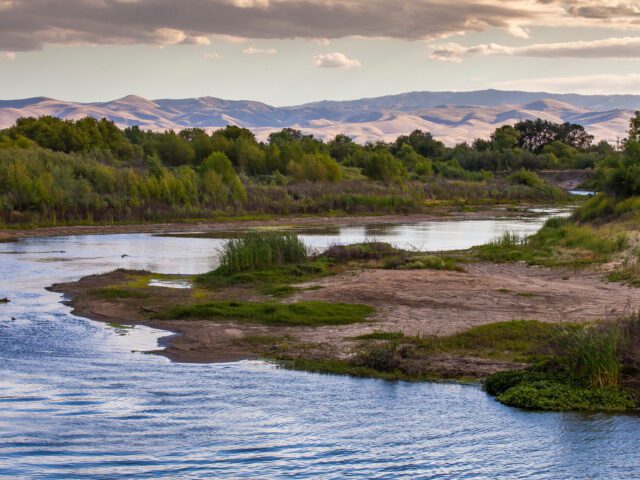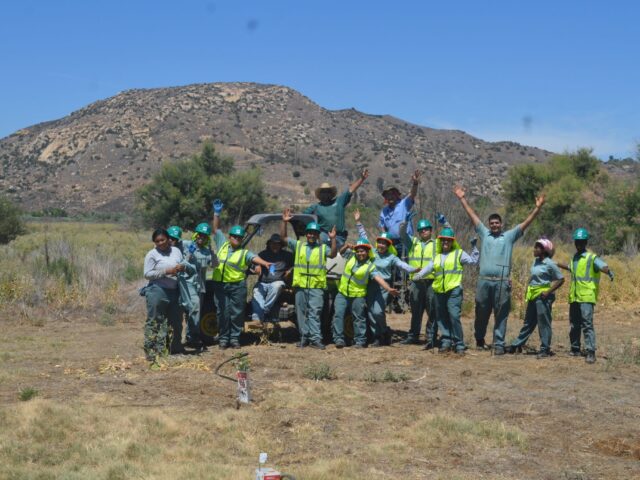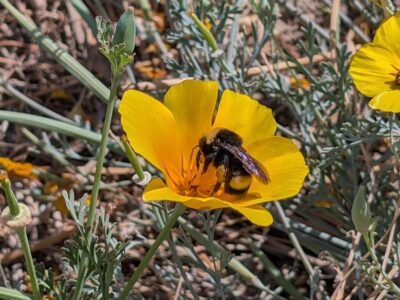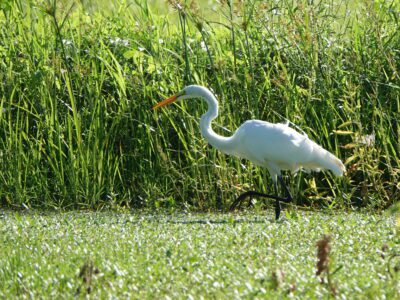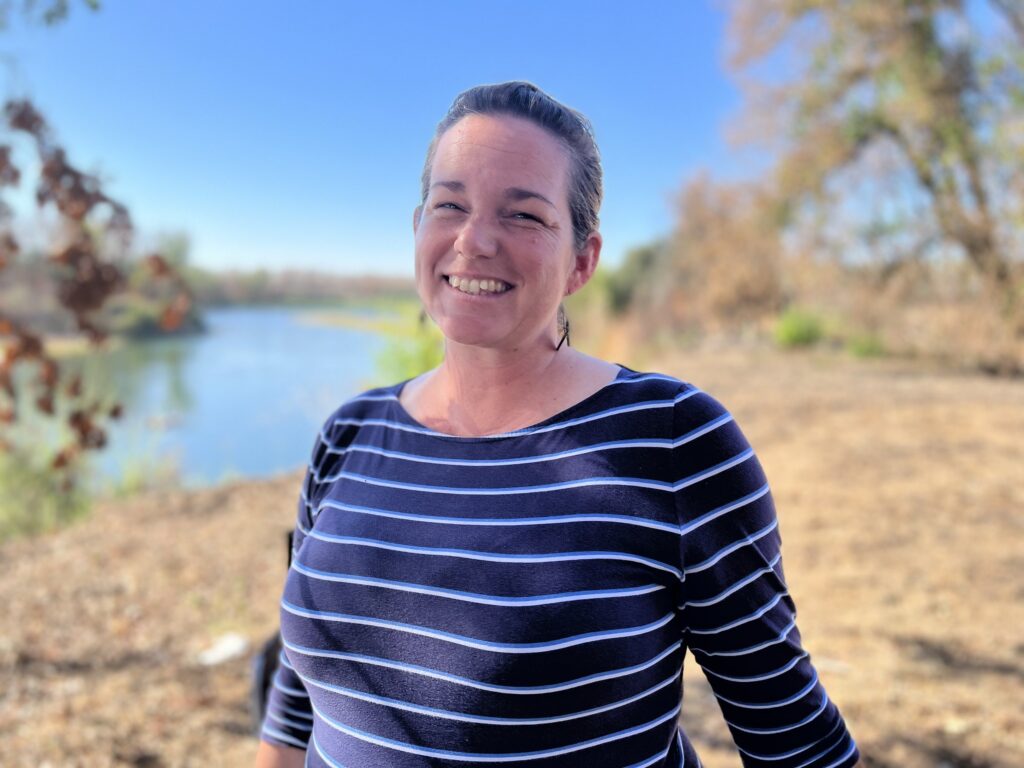
Two and a half decades ago, a pair of conservation-minded California farmers had a path-breaking realization: farmers and conservationists share a common interest in the health and sustainability of natural resources like soil, water, air, and biodiversity.
So, they should be working together to protect and regenerate the land.
Long story short, River Partners was born.
Fast forward to today, and our innovative use of farming techniques and ecological science allows us to repair native ecosystems in some of the state’s most imperiled river corridors on an unprecedented scale.
Since 1998, we’ve channeled over $200 million toward restoring nearly 20,000 acres of the most degraded and important river corridors statewide.
Join us in celebrating 25 years of success as River Partners President Julie Rentner shares inspiring stories that give us reasons to be hopeful as we work toward a resilient future with abundant wildlife, clean water, and vibrant communities.
How has River Partners’ focus changed over the years?
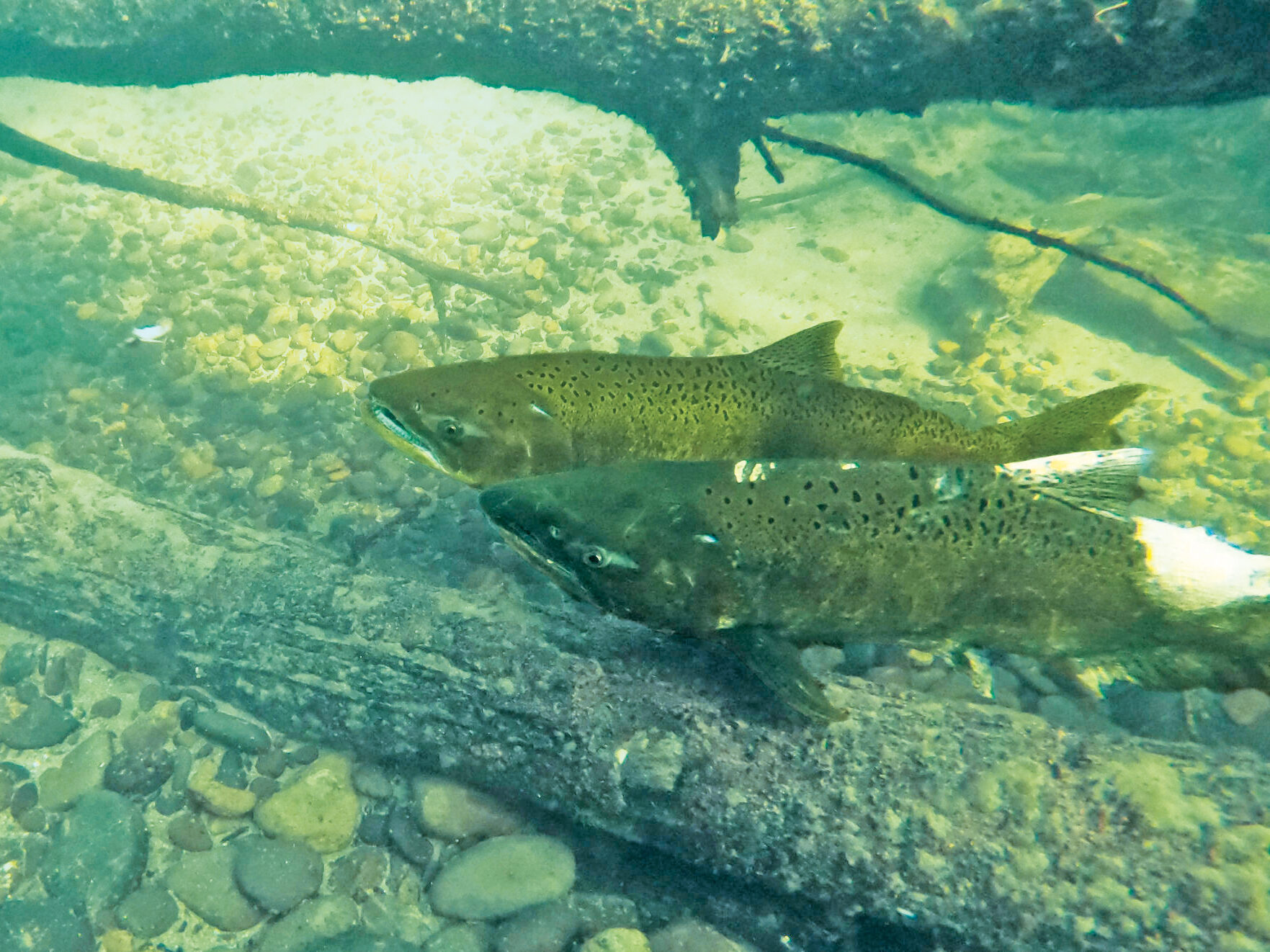
Julie: When River Partners started, we were focused on understanding how to reliably grow native plants and riverside forests at scale. We were learning how to make acorns and grass sprout. We did not have a lot of experience and had to take big risks, spending large amounts of money on native seed and plants without knowing whether they would be successful.
However, thankfully, the early team at River Partners was really dedicated to making sure that the projects succeeded, no holds barred. They weren’t going to walk away until it worked. And we developed a culture of tenacity that still exists today. We aren’t afraid to take a big risk and try to do something that we trust and believe in.
But we didn’t know how to measure our success. That’s when the focus shifted to understanding the impact of our work on wildlife.
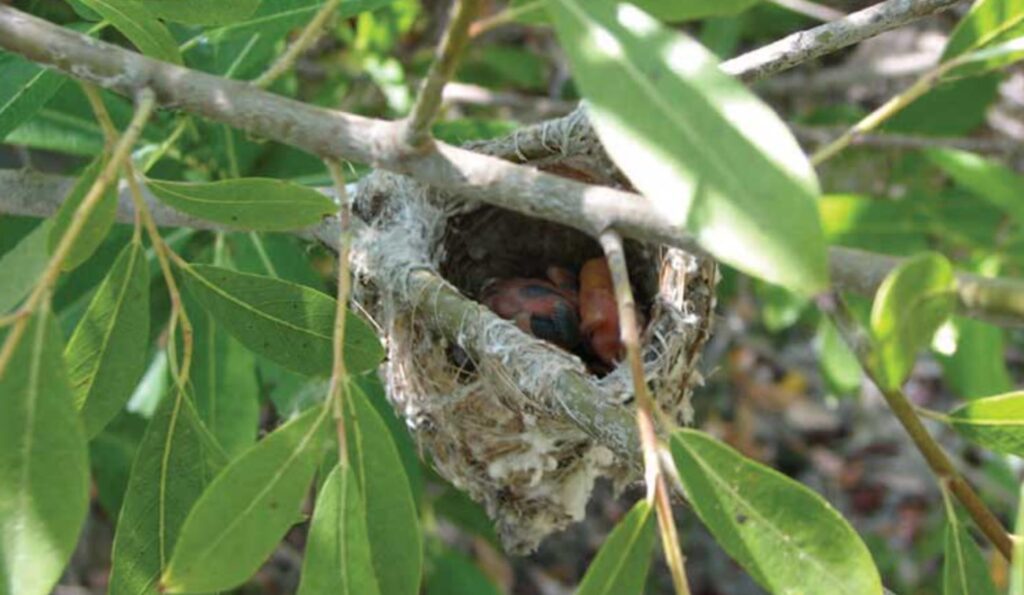
By partnering with organizations like Point Blue Conservation Science, we were able to determine that if the wildlife, particularly birds, moved into a restored area, the work was successful. The organization moved away from measuring success based solely on metrics like the number of stems sprouted or the particular type of leaf and shrub cover, and began focusing on letting the wildlife tell us of it was working.
That was a big step forward in restoration ecology. There’s stuff that salmon understand about water that we don’t. So if we can get salmon to move in, it’s a good indicator that we did something right.
It’s a significant contribution to the field of restoration ecology that we were able to help shift focus away from getting the right number of inundation days right and other metrics that have to do with the physical arrangement of trees and soil. We were able to get people to see that if the creatures choose to live there, then that means that the restoration is working. And that’s a big change.
Looking back at 25 years of restoration, how has River Partners’ work impacted wildlife populations, and what are some of the most significant changes you’ve observed?
Julie: John Carlon, one of the founders of River Partners, used to talk to me about how we’re making life rafts for wildlife species to keep them from blinking out forever.
Take the Valley Elderberry Longhorn Beetle, or VELB, for example. It’s a federally threatened species that became listed in the ’80s. It was so rare that a lot of people were saying they didn’t think it existed anymore. But we had blind optimism. We planted hundreds of thousands of elderberries, the sole host plant for the beetle.
We transplanted big old elderberries from somewhere where they were going to be harmed, to somewhere where they could live on. And we saw VELBs emerge on some projects.
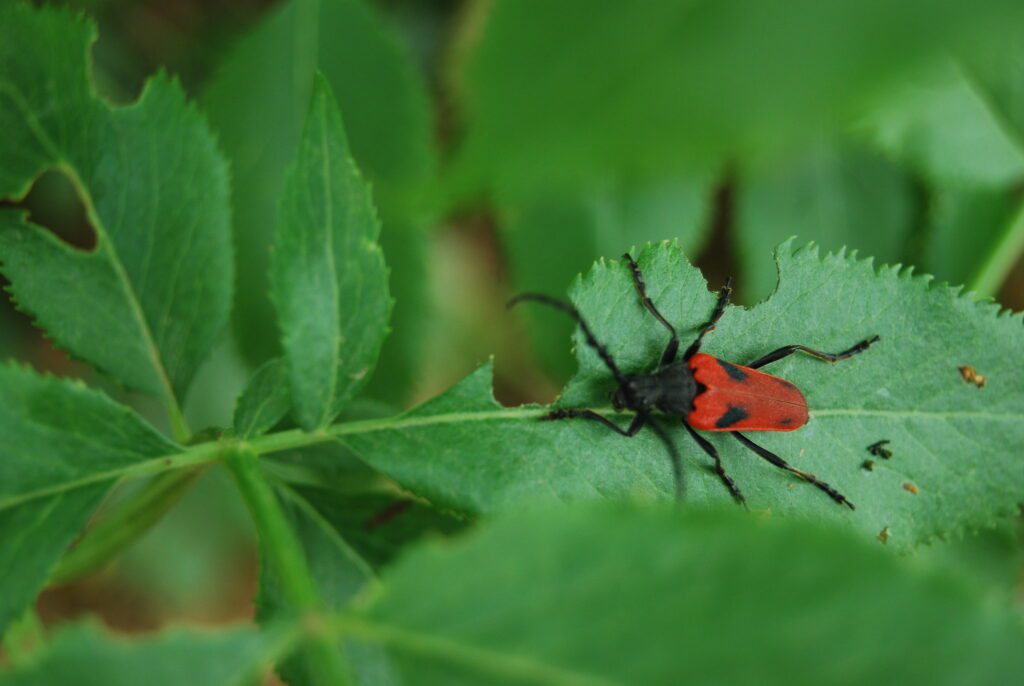
It’s a powerful experience to take something that’s almost theoretical and everybody jokes about “I don’t even think that species exists anymore,” and then seeing it in real life, handling it, observing it.
And it’s the same with the recovery of the endangered riparian brush rabbit, growing new populations where they weren’t before. Or seeing deer return to the edge of the river where they haven’t been seen in 60 years—as was the case at our historic Dos Rios Ranch Preserve near Modesto. Or with our salmon restoration work—we’ve restored side channels on the Sacramento River and seen fish start to immediately utilize that habitat.
It’s really motivating, and in stark contrast to a lot of endangered species work where we see wildlife go extinct or missing from large parts of their range. Seeing what restoration can do inspires hope, and helps people see a different vision of the future.
“We’re moving on from life rafts for wildlife…to restored and connected river corridors; entire regions brought back to life.”
Julie Rentner
So, over the last 25 years, we’ve been able to encourage so much hope and big vision from a large community of people in the Central Valley that we’re moving on from this vision of life rafts for wildlife, and we’re moving on to restored and connected river corridors; entire regions brought back to live.
We’re no longer talking about little precious places where we hope a few individuals of a population can remain. We’re connecting the dots between those precious places to make functional wildlife corridors again, thinking at a scale that is truly massive, a scale that would have seemed impossible to achieve 25 years ago.
What’s the most significant change you’ve observed when it comes to how River Partners’ work impacts communities?
Julie: We’ve worked with communities that have undergone a complete 180-degree shift in perspective or value set.
One of the most dramatic community shifts is the flood management community in the Central Valley. Twenty-five years ago, they couldn’t talk about having a vision of reintroducing riparian forests on the major rivers in the bottom of the Central Valley, because that would be in direct conflict with law, and policy, and practice.
Through demonstration and collaboration, and a lot of projects that we’ve worked on either as a contractor, project lead, or consultant, we’ve been able to change their perspectives and create a collaboration space.
We’ve arrived at perfect alignment. It used to be environmentalists fighting for the rights of trees and birds against engineers who are fighting for public safety, because they’re concerned that planting in along riverways is going to make levees break.

Now, the flood management community understands that our work to restore riverways isn’t just good for a thriving environment, but is essential for keeping communities safe from flooding, which is going to become more frequent and severe with a changing climate.
In fact, our flagship Dos Rios Ranch Preserve near Modesto, the largest public-private floodplain restoration project in state history, was featured on the cover of the 2022 Central Valley Flood Protection Plan.
How did this happen? It’s just through the work of getting stuff done on the ground, taking action, demonstrating solutions, learning, and trusting.
What are some of the biggest challenges we’ve faced in the last 25 years, and how have we worked to address them?
Julie: One of the biggest challenges we face today is the loss of 95% of our freshwater habitats in the Central Valley. The scale of the problem is breathtaking. River Partners was founded to address this issue, and we have been pushing hard for 25 years to invest more and do more to restore these habitats.
We have learned a lot over the years about the most effective ways to push and move things faster, as well as the hazards with pushing too fast.
One of our biggest challenges is balancing the need to work together and go fast. As consultants often say, you can have it good, fast, or cheap—pick two. However, we are striving for all three to achieve the wins we need for wildlife, flood safety, water, and communities. We live in that space of tension, always pushing to do more, because the scale of the problem is so big.
What has been your most rewarding project at River Partners?
Julie: Obviously, there’s projects like our flagship Dos Rios Ranch Preserve, where we transformed flood-prone farmland into a thriving riparian habitat. At 2,100-acres, its California’s largest floodplain restoration, and a model of multi-benefit conservation that can be replicated up and down the state to create river parks, provide flood safety, improve water quality, and preserve habitat for wildlife. That’s been incredibly rewarding.
But, what’s coming to mind is a really small project—the lower Calaveras River in Stockton. It was a small project, but it had a big impact in the community, which we didn’t expect.
We did a three-acre native grass planting right in an intense flood corridor through downtown Stockton. You can’t do much in that flood corridor, but we reconciled and worked with the levee district there and agreed to at least do some grasses and flowers in the floodway.
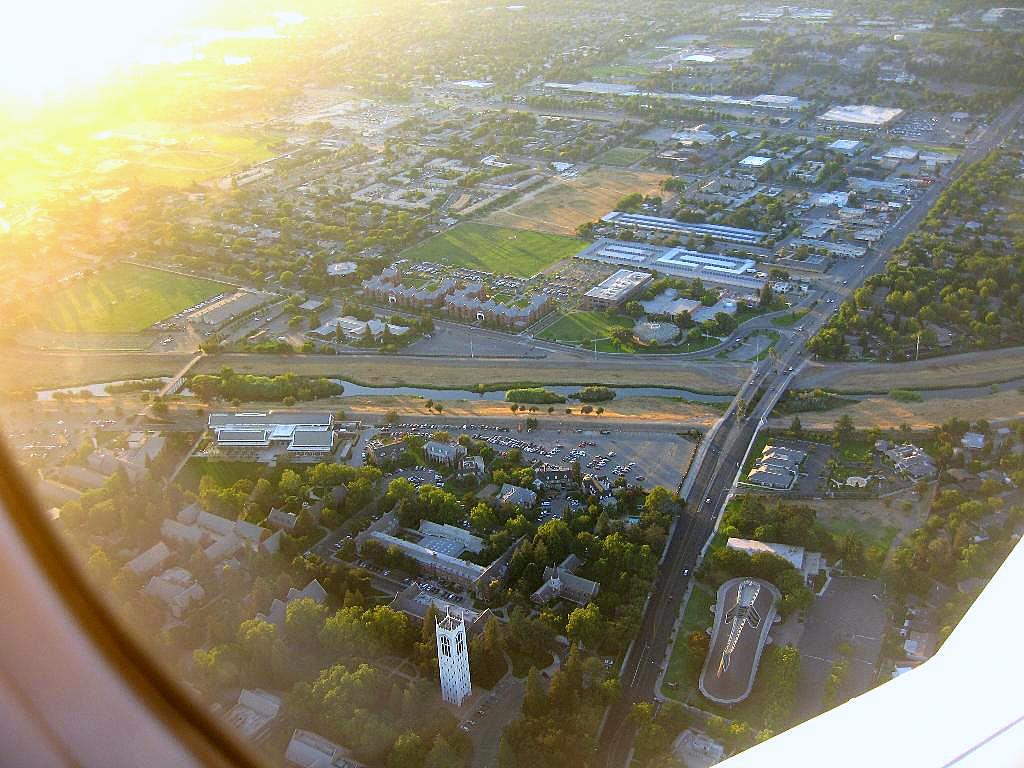
It was a small footprint, small budget, and quick project, but what happened is because it’s in the heart of Stockton, volunteers and people who live in the neighborhood participated in the restoration. They started taking school kids out there and collecting their own data. We gave them a data collection method to measure the grasses. That was in 2013.
Last year, I visited with Jim Marsh, of Friends of the Lower Calaveras River, and he showed me the notebook that he’s been keeping for 10 years. It has data religiously taken on a quarterly basis on the project, along with qualitative observations. He’s got watercolor paintings of bumblebees and butterflies, everything he’s seen in the grasses.

It’s an amazing outcome for an individual’s life and a community, and really the whole watershed, to be engaged with nature in one of the most unexpected places. Now, it’s a place where people living in Stockton can walk out of their neighborhood and have a natural experience and challenge their own observational skills and their art.
Other projects to check out:
What are your hopes for river restoration in the future?
A: The level of ambition for our work—that hasn’t changed. But the scale of the vision is getting bigger every single year. There’s more and more people buying into the vision, our staff keeps growing. We’ve shifted from hundreds of acres of restoration to thousands of acres.

Back in the late ’90s, when River Partners was founded, ecological restoration was a different space. There was a lot less trust among the people who rely on rivers that environmentalists would do something helpful.
River Partners had to educate others on our approach with some of their projects, and came up against people that did not understand why we would want to change things that had been done a certain way for a long time.
Fortunately, California and the Central Valley has been through a significant renaissance in the way the public, local leaders, and state-level policymakers think about the integration of ecosystem values with our water system.
We’re in alliance, we’re in partnership, and that’s really the thing that’s going to push scaling restoration and changing behavior in the next couple of decades.
Gone are the days where we make decisions between fish and farmer. We’re not there anymore. We’re fortunate to have moved past that and to be able to work together toward a better future for our rivers and communities.




